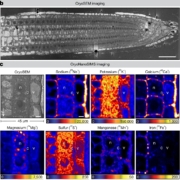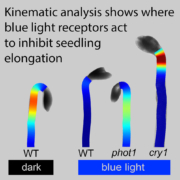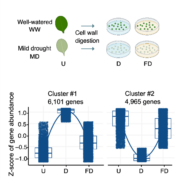Development of a structure-switching aptamer-based nanosensor for salicylic acid detection
 Aptamers are single-stranded DNAs that fold into tertiary structures that bind specifically to various targets, allowing them to serve as probes or sensors. In this study, Chen et al. introduce a cutting-edge aptamer-based nanopore thin film sensor designed to detect salicylic acid (SA), an important compound involved in plant immunity and human health. Traditional methods like high-performance liquid chromatography (HPLC) and mass spectrometry face limitations due to SA’s small size and lack of reactive groups. The new sensor addresses these challenges by offering high sensitivity and specificity. A key innovation in this study is the use of structure-switching SELEX, a technique that immobilizes the aptamer library rather than the target molecule. This approach enabled the identification of a highly specific SA aptamer that effectively distinguishes SA from its metabolites and structural analogs. The sensor demonstrated a detection limit of 0.1 μM SA and showed excellent performance in both buffer solutions and plant extracts from Arabidopsis and rice. Additionally, the sensor’s binding kinetics were optimized, achieving equilibrium within 5 minutes for low SA concentrations. This rapid and cost-effective sensor surpasses traditional antibody-based methods and offers a robust tool for on-site SA detection. Its high sensitivity and specificity make it a valuable asset for plant science research and potentially for broader applications in life sciences and medicine. (Summary by Amarachi Ezeoke) Biosens Bioelectron 10.1016/j.bios.2019.111342
Aptamers are single-stranded DNAs that fold into tertiary structures that bind specifically to various targets, allowing them to serve as probes or sensors. In this study, Chen et al. introduce a cutting-edge aptamer-based nanopore thin film sensor designed to detect salicylic acid (SA), an important compound involved in plant immunity and human health. Traditional methods like high-performance liquid chromatography (HPLC) and mass spectrometry face limitations due to SA’s small size and lack of reactive groups. The new sensor addresses these challenges by offering high sensitivity and specificity. A key innovation in this study is the use of structure-switching SELEX, a technique that immobilizes the aptamer library rather than the target molecule. This approach enabled the identification of a highly specific SA aptamer that effectively distinguishes SA from its metabolites and structural analogs. The sensor demonstrated a detection limit of 0.1 μM SA and showed excellent performance in both buffer solutions and plant extracts from Arabidopsis and rice. Additionally, the sensor’s binding kinetics were optimized, achieving equilibrium within 5 minutes for low SA concentrations. This rapid and cost-effective sensor surpasses traditional antibody-based methods and offers a robust tool for on-site SA detection. Its high sensitivity and specificity make it a valuable asset for plant science research and potentially for broader applications in life sciences and medicine. (Summary by Amarachi Ezeoke) Biosens Bioelectron 10.1016/j.bios.2019.111342









